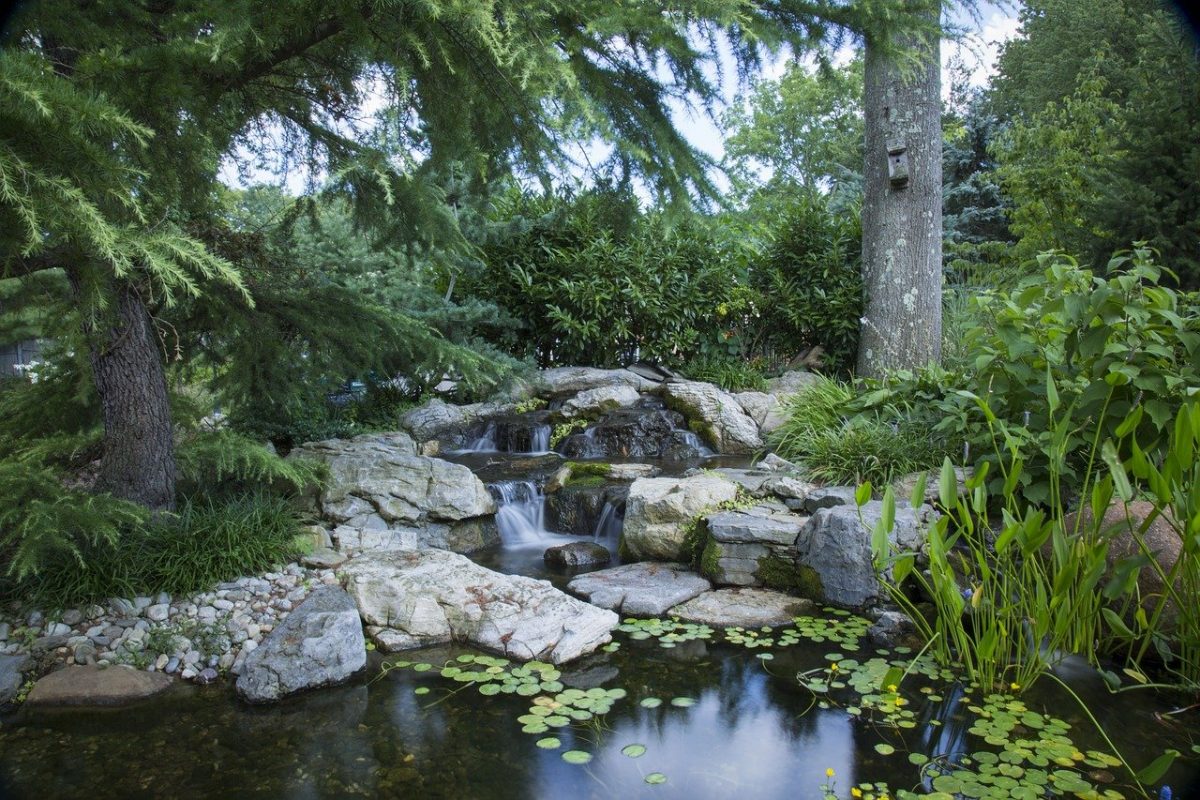
If you have a small pond in your garden and you want to decorate it, the best option is to choose aquatic plants. These plants are usually very showy and do not require much care. On some occasion, depending on the species, you have to take into account some aspects so that they can live well.
In this post we are going to show you the five most beautiful aquatic plants for your garden pond. Do you want to know what they are and what characteristics do they have?
Selection of aquatic plants for pond
Having a beautiful pond is not a difficult task. But it is less so if the most suitable aquatic plants for it are known. So let's see what they are:
Bank or margin
Red Cardinal (Lobelia cardinalis)
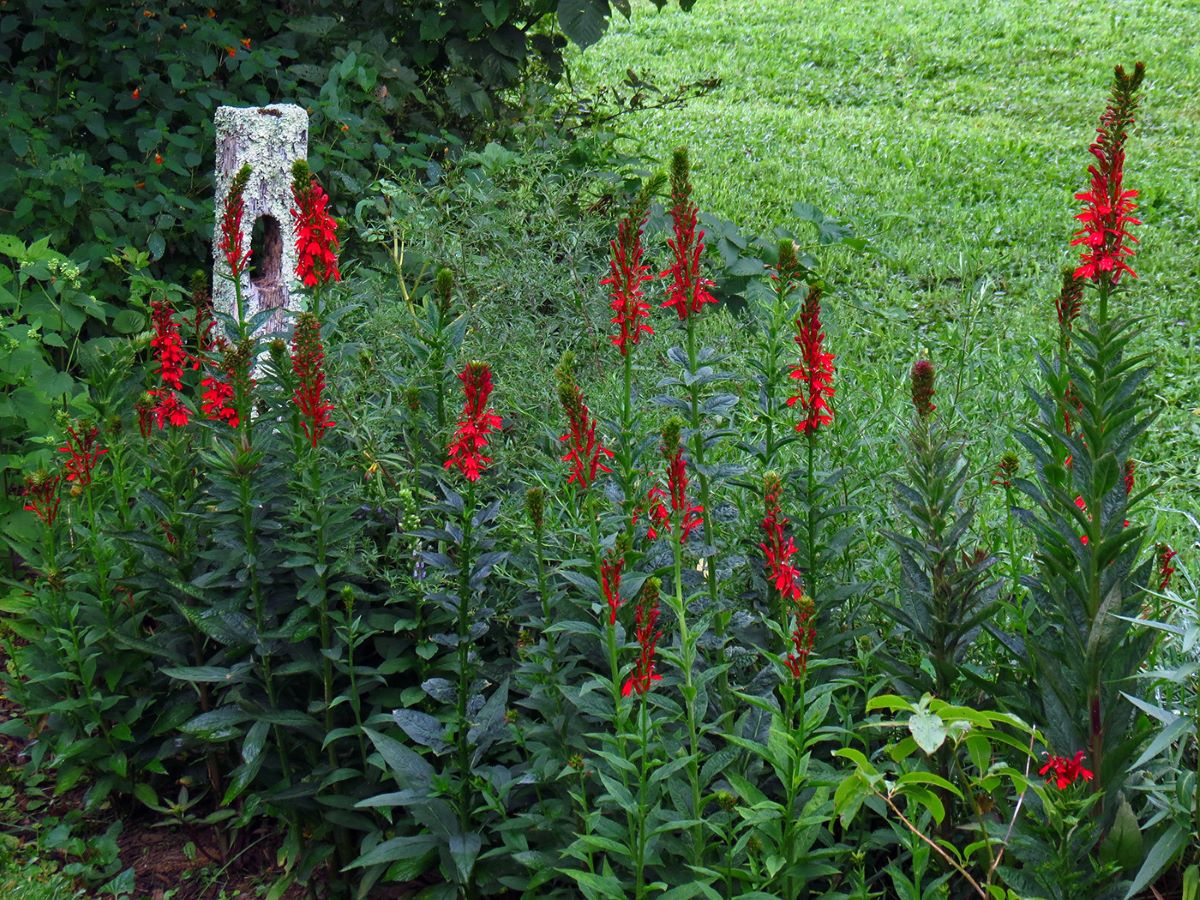
Image - Flickr / BlueRidgeKitties
The ingrown cardinal is a nice plant native to America that you can put on the edge of your pond. It lives for several years, and has simple, green leaves. Its flowers sprout from a flower stalk in great numbers, and they are red.
Carex (Carex pendula)
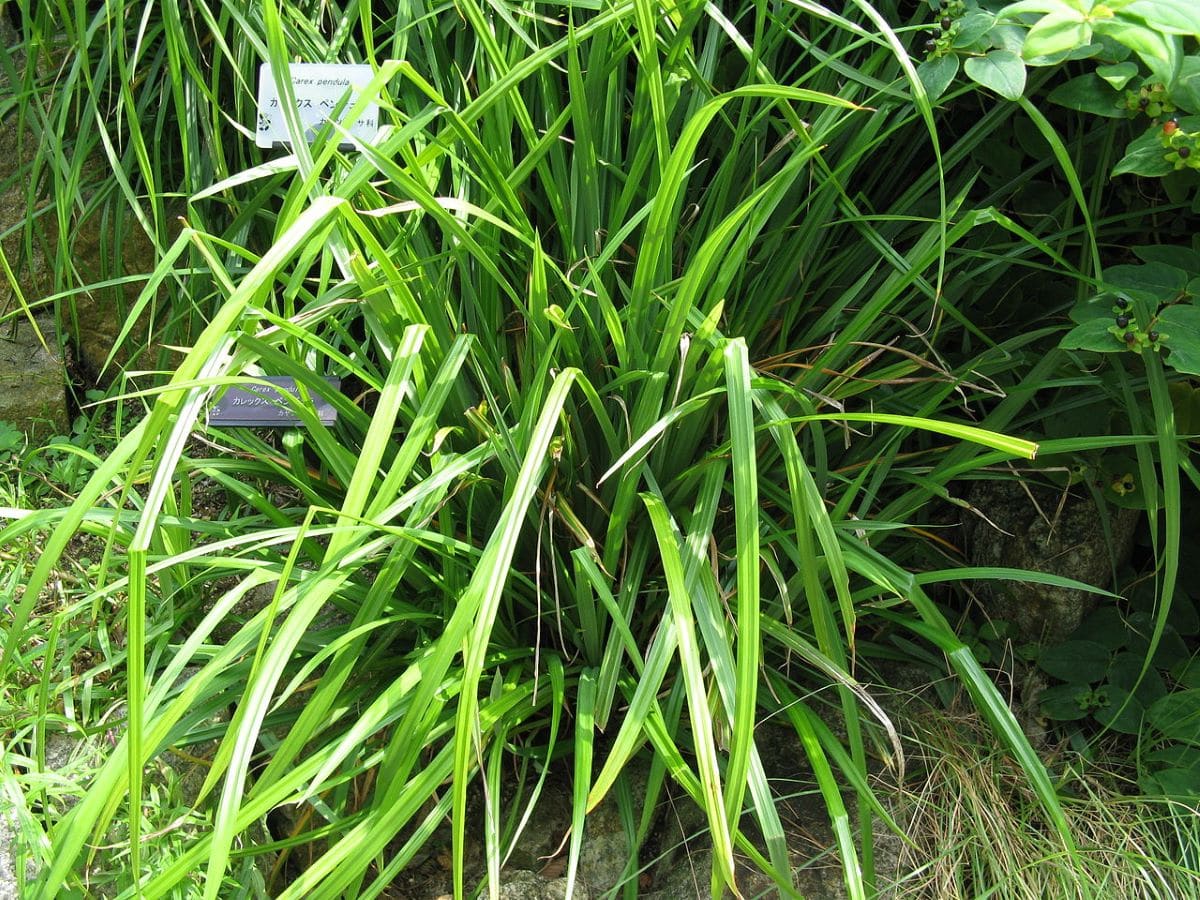
Image - Wikimedia / KENPEI
El carex, also called cattail, is a herbaceous plant native to Europe widely used on the banks of the pond. It grows forming low clumps, developing green and lanceolate leaves. It blooms producing yellowish-green inflorescences.
Papyrus (Cyperus papyrus)
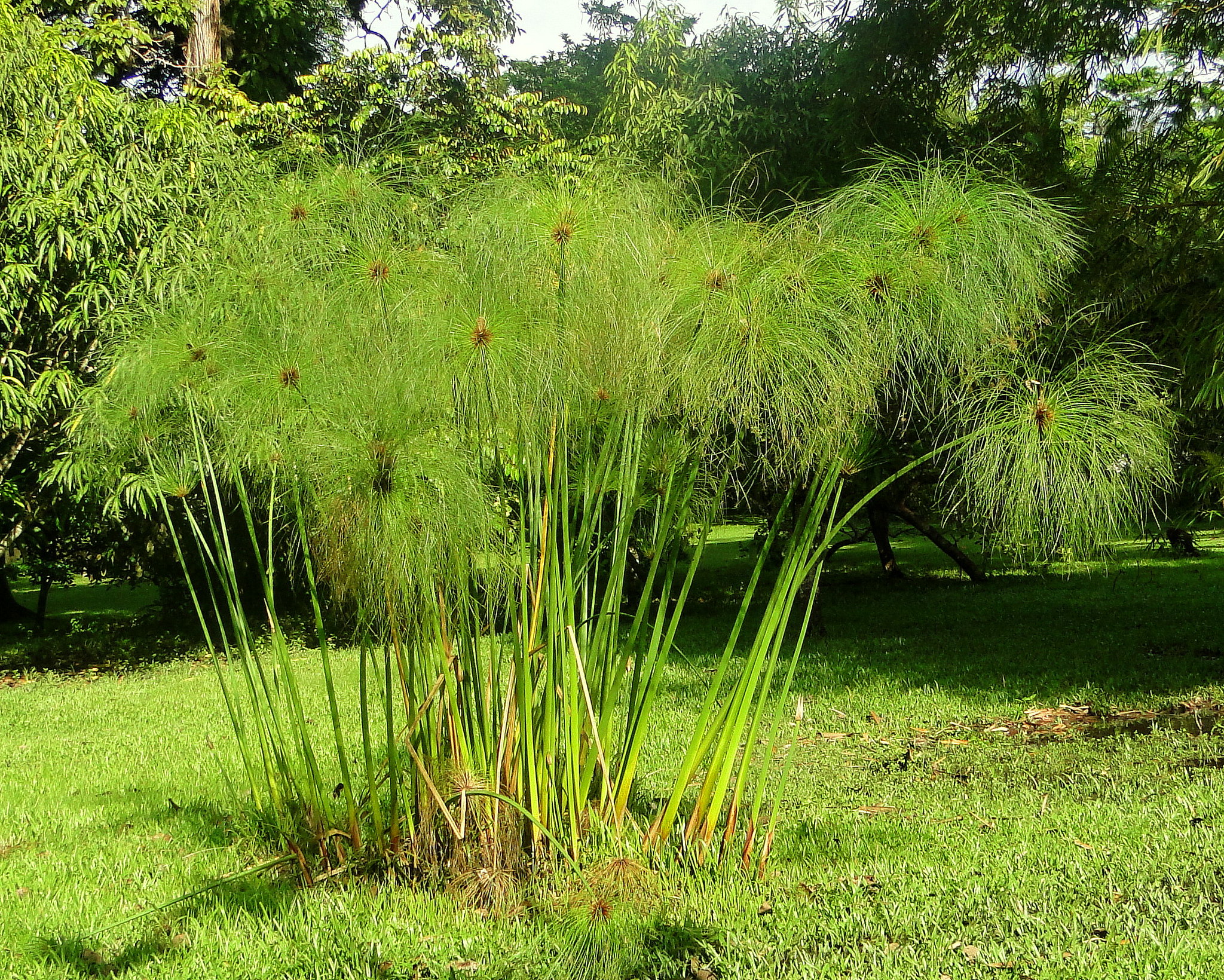
Image - Flickr / barloventomagico
El papyrus it is a rhizomatous herbaceous plant that grows in the basin of the Mediterranean Sea. In the past it was very common in Egypt, but today its population in that country has been greatly reduced. It has green stems, and very thin leaves.
Yellow lily (Iris pseudocorus)

Image - Wikimedia / Marc Ryckaert
If you want a lily in your pond, feel free to plant Iris pseudocorus in the margin. Like all lilies, it is a bulbous plant that remains dormant in summer and fall, but that in winter it wakes up to bloom in spring. It is native to Europe and Asia.
Oxygenators
Fox tail (Ceratophyllum demersum)
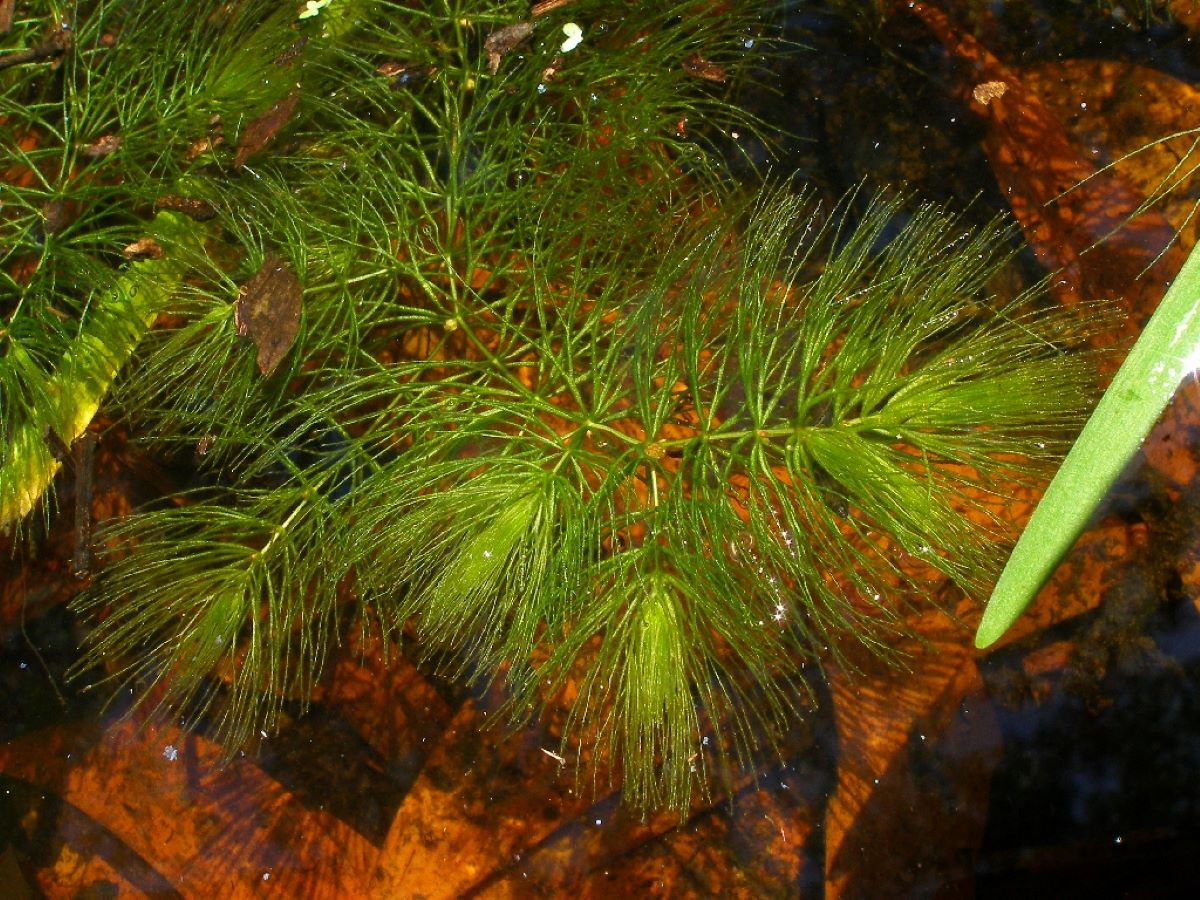
Image - Wikimedia / eyeweed
It is a plant that grows in South America. It has a stem from which very thin green leaves sprout. It grows in rivers and lakes in many parts of the world. You can have it floating or planted on the floor of your pond. In any case, it will prevent the proliferation of algae and will keep the water oxygenated.
Myriophyllum verticillatum
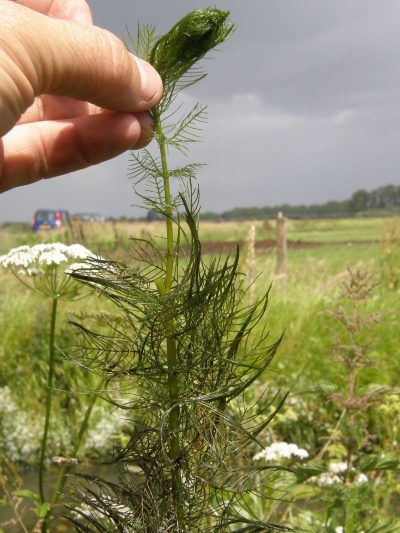
Image - Flickr / Bas Kers (NL)
It is an aquatic plant that lives in the lakes of Europe, submerged. It has branchy stems, green in color, and lives for several years. Its flowers sprout between spring and summer, but they are insignificant (they measure about 3mm, and are yellow-green).
Vallisneria »giantea»
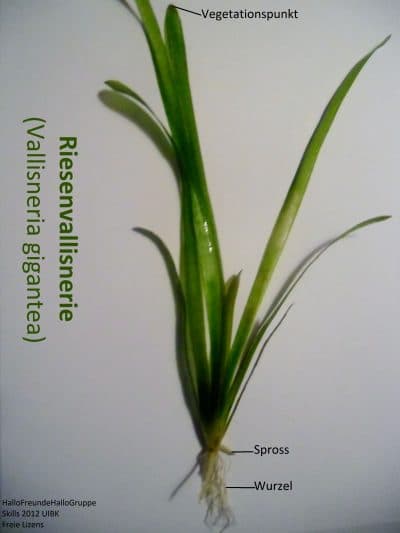
Image - Flickr / Thomas.pixner
La giant valisneria It is an ideal aquatic plant to grow in hot climates or in highly protected areas. It has very long leavesIn fact, it should not be included in ponds that are less than one meter wide. It is native to the Philippines and New Guinea.
Floats
Hydrocharis-frog bites

Image - Wikimedia / Aiwok
It could be called a small water lily, since it has very similar leaves, green in color and with a rounded shape. It is native to Europe, and has white flowers.
Lesser duckweed (Lemna minor)

Image - Wikimedia / Mokkie
It is a plant native to almost the entire world. It has very small, green leaves. Its growth rate is quite fast.
Limnobium laevigatum
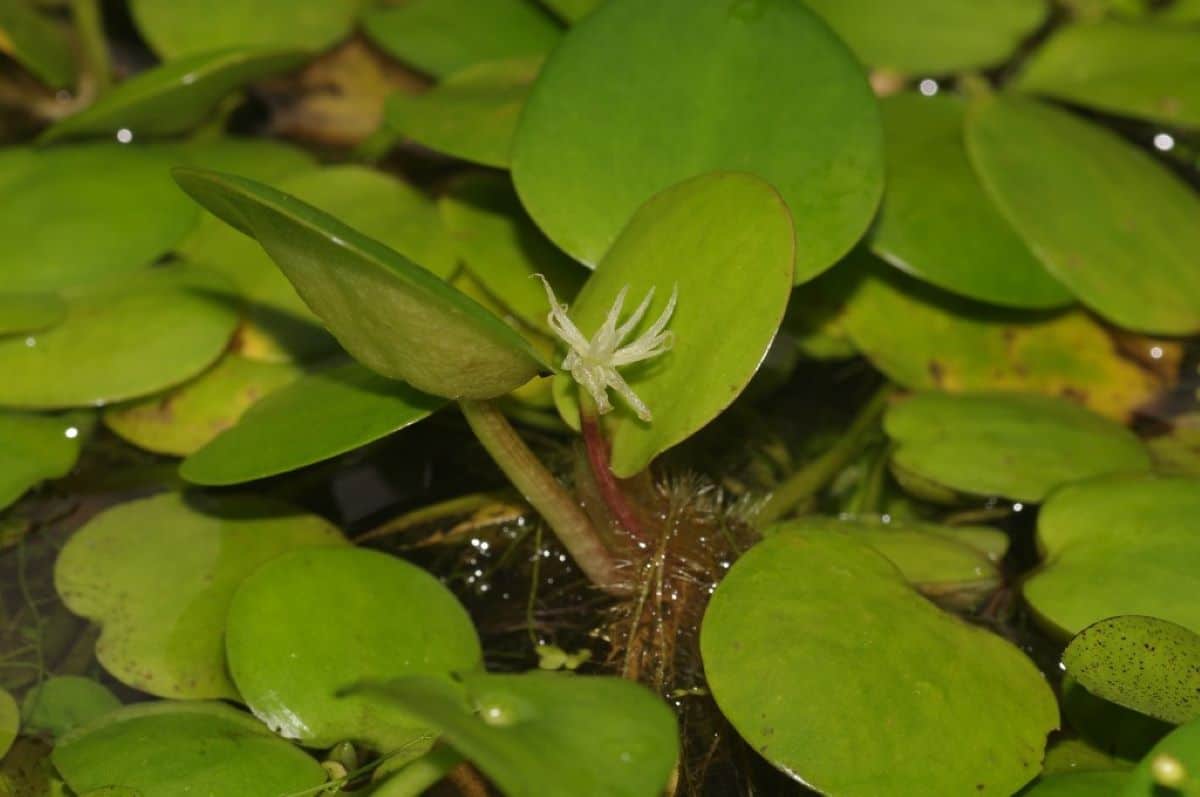
Image - Flickr / eyeweed
It is a species native to North America that has floating leaves with a rounded shape. Its flowers are small and white, a color that contrasts with the green of its foliage.
Aguas profundas
Water lily bank (Nymphaea alba)
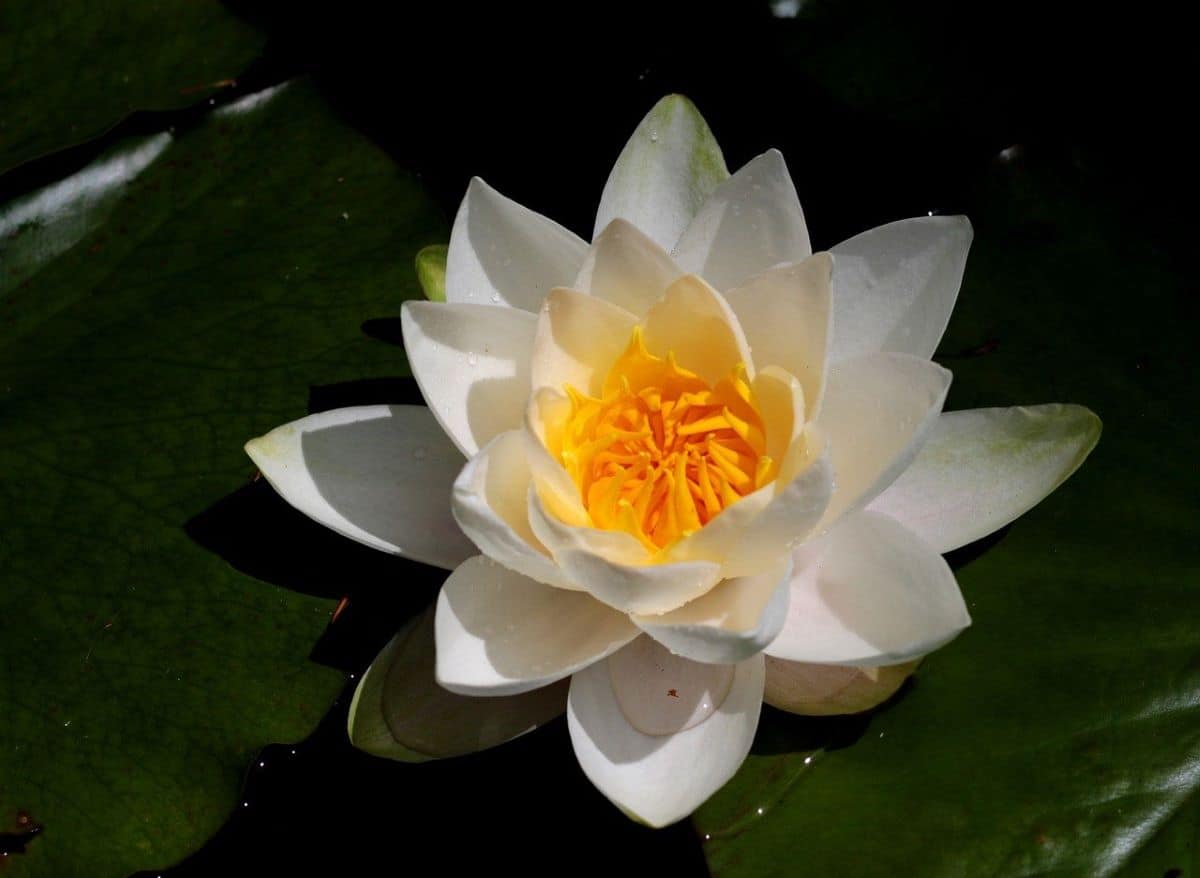
It is known as the European white water lily or water lily. It is from the family of nymphs and it takes root at the bottom of the pond in which it lives. Its leaves are large and lobed with a leathery texture, and it produces large white flowers.
nymphoides indica

Image - Wikimedia / Edward Jaser
This aquatic plant has its origin in Australia, however, it can grow almost anywhere. It has an appearance of white hair that makes it have a very nice texture and be very showy. It reproduces quite fast.
Nymphoides peltata
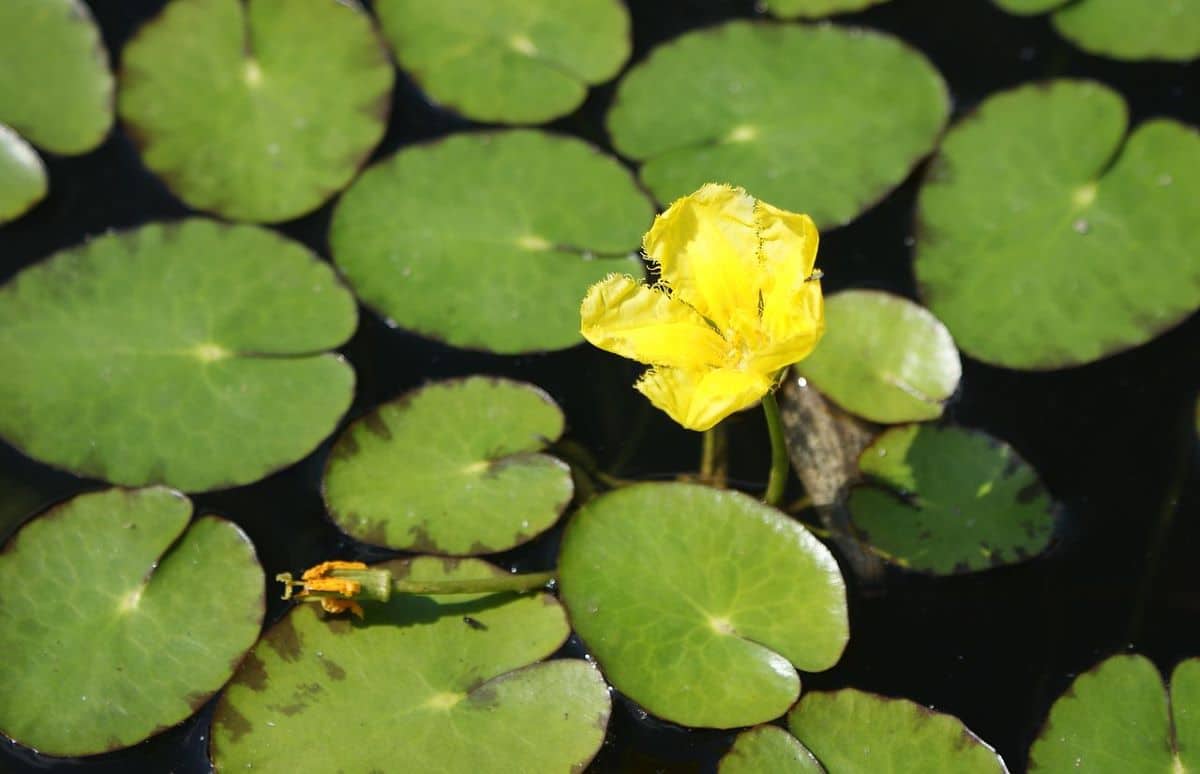
Image - Wikimedia / Krzysztof Ziarnek, Kenraiz
This plant is used to play with colors. It is yellow in color and is an evergreen plant. It can root at depths of more than one meter. Its floating leaves are orbicular and are arranged on long petioles of an intense yellow tone.
nuphar lutea
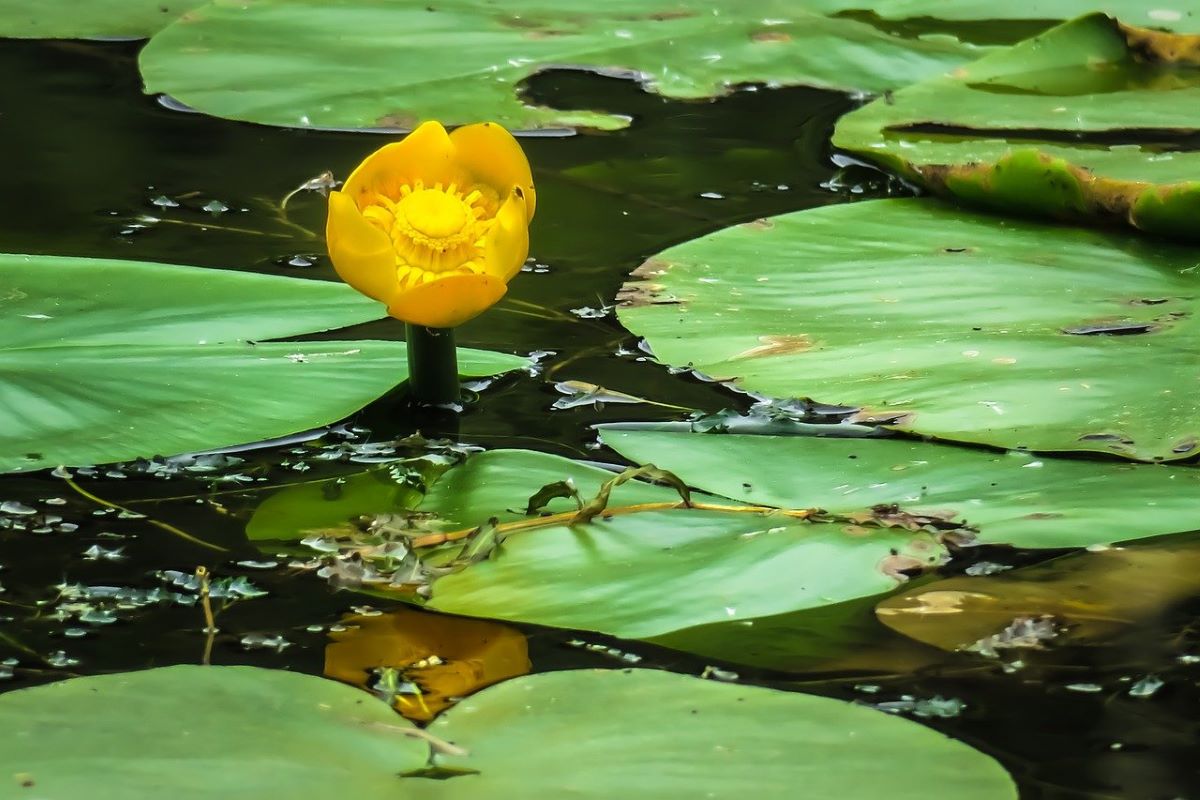
This plant belongs to the nympho family. It has flat, oval and somewhat pointed leaves. By having yellow flowers, you can combine them with the previous ones in your pond without problem.
Nile Rose (Nelumbo nucifera)
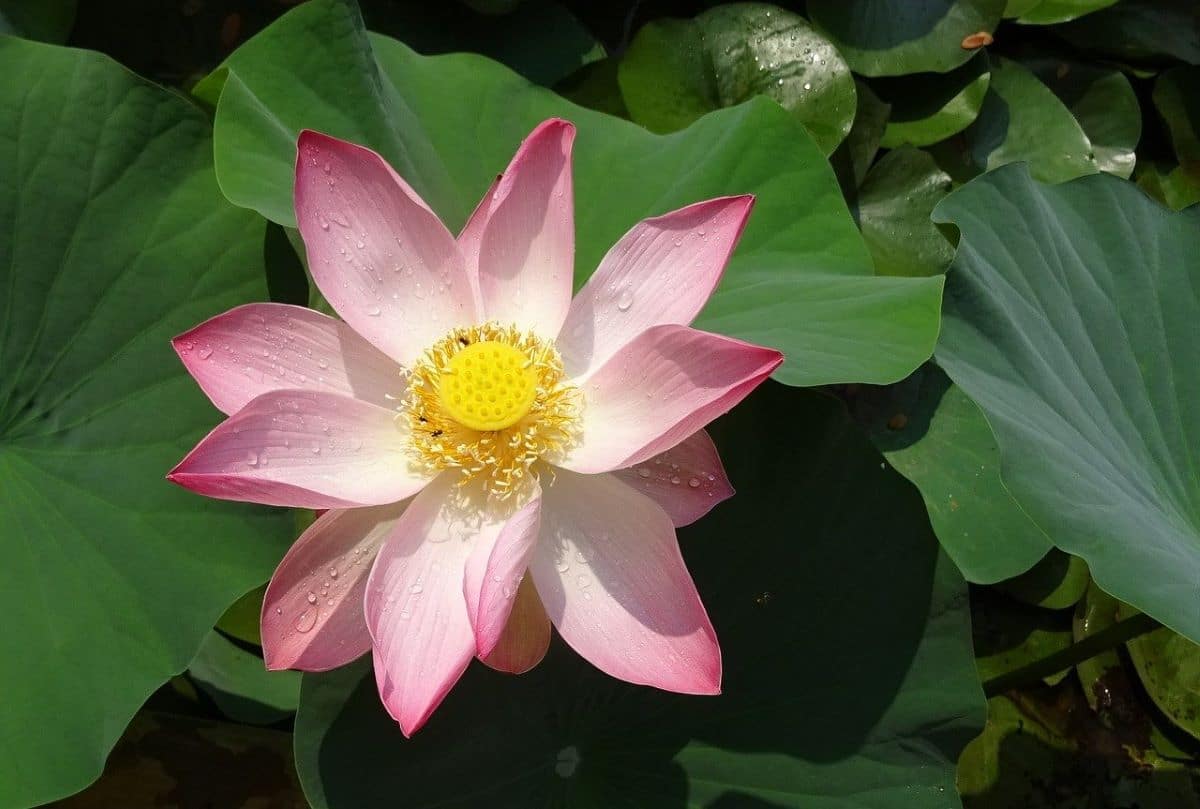
This plant has the name of rose of the Nile or sacred lotus. Its leaves are floating or emergent and with a wavy edge. The flowers are of good size, and pink in color.
With these plants you can better decorate your pond and make it much more beautiful and colorful.
What types of aquatic plants are there?
Within the aquatic plants we have several types, such as the floating plants, those that oxygenate, those that are placed on the shore or even those in deep waters. In the lakes, rivers and swamps of practically the whole world there is a great variety of plant species, and many are used to decorate the ponds.
Its main features are:
- Floating plants: as their name suggests, they are those that float on the surface of the water. These have roots, but they are not anchored in the ground. As examples we include the Salvinia natans, Limnobium laevigatum and Phyllantus flutains. These three are great for beginners, in fact they are often used as aquarium plants.
- Oxygenating plantsThese are herbaceous plants that, let's be honest, do not have a particularly high ornamental value. But their inclusion in ponds is very important to maintain high water quality, since they not only produce oxygen, but also prevent algae from proliferating. In this group we have the elodea canadensis, Myriophyllum verticillatum or Ceratophyllum demersum.
- Riverside plantsThese are plants that are planted on the edge of the pond. They are those that need to have the aerial part (stems, leaves, flowers) exposed, and the roots in flooded soil. There are very interesting species, such as Lobelia cardinalis, sibirica iris or the Carex.
- Deep water plantsDeep-sea aquatic ones are similar to floating ones, but they do have roots growing on the sand. They also tend to produce beautiful flowers, such as Nymphaea, Nuphar or Nelumbo.
Knowing all the variety of plants that exist, we can play to win in the maximum possible decoration using all types. Deep-sea plants are the best known and the most attractive for our pond. They are usually placed from 40 to 90 centimeters.
For its correct arrangement, you must place the pots on a few bricks and lower them. Then, as they grow, you must remove the bricks one by one.